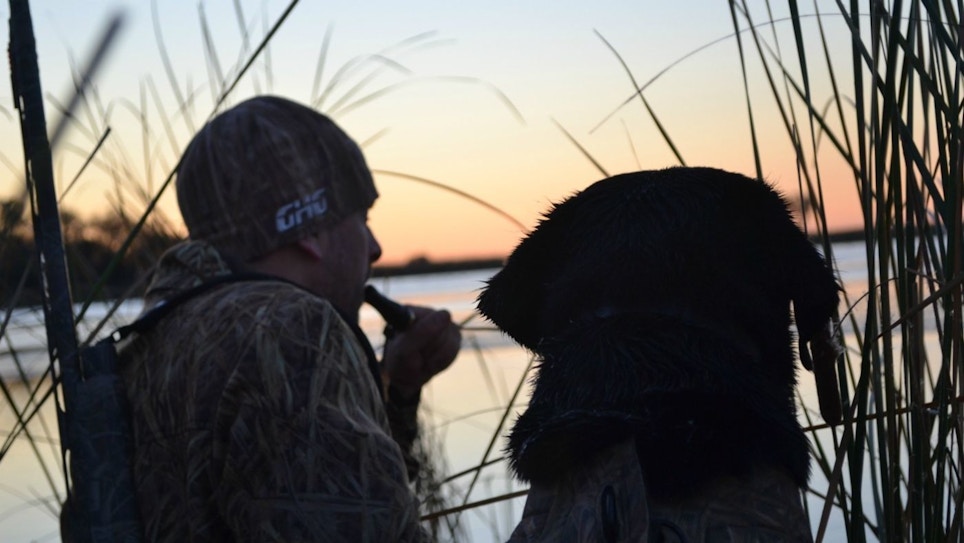While the number of waterfowl hunters has trended downward in recent years — as with most other types of hunting, incidentally — latest figures show there are about 1 million Americans that killed about 11.6 million ducks and 3.27 million geese last year.
Of note to retailers dealing in waterfowl hunting equipment is that these hunters are spread throughout the nation. In 2018, about 227,000 hunters in the Atlantic flyway harvested 1.6 million ducks and 754,000 geese, some 434,000 hunters in the Mississippi flyway shot 2.43 million ducks and nearly 1.2 million geese, about 223,000 waterfowlers in the Central flyway killed 2.43 million ducks and 912,000 geese, and another 152,000 hunters along the Pacific flyway harvested 2.55 million ducks and about 414,000 geese.
If you’re in the business of selling hunting equipment, those hunter numbers are nothing to sneeze at, and ignoring this segment of hunters in such a gear-intensive sport could hurt your bottom line.
Also of note to retailers is that the vast majority of waterfowl hunting is done by hunters using duck and goose calls to attract birds to within shotgun range. Consequently, there’s money to be made in selling duck and goose calls, as well as other waterfowl hunting accessories. Yet, just as a prospective duck hunter can stand in the call aisle at his or her local big box store and wonder what’s special about each call, a retailer can have difficult time trying to determine what calls to carry in his or her inventory.
To make your job of stocking what customers are likely to buy a little easier, let’s take a quick dive into the ocean of duck call knowledge.

All About Duck Calls
One important consideration when choosing a duck call — whether to use it or stock it in your shop — is the material from which it is made. Wooden calls are the old standard classic, and many hunters still prefer them today. They are often used for close-range calling, since they are generally somewhat quieter than calls made from other materials. In general, calls made from soft woods are quieter, while those made from harder woods can be used to make louder sounds.
The next type, polycarbonate/plastic calls, are made of very dense materials and have great acoustic quality. They tend to be pretty loud — certainly louder than wood calls — and are nearly indestructible due to the durable material. They are also very low-maintenance calls and are usually sold at a fairly low price point, making them good for beginners and seasoned duck hunters.
Acrylic duck calls are usually the most expensive duck calls and are often favored by those who have enough duck hunting experience to appreciate their qualities. The most durable of all the call types, acrylic calls are also the loudest, so they can be successfully used to call to ducks at long distances. Since the material they are made from comes in a variety of colors and can be easily polished, they often look more like a work of art than a simple piece of hunting gear. Many have been hand-tuned for perfect sound right out of the box, making them even more expensive.
Another important factor for retailers to consider when deciding on which calls to stock is reed configuration. Single-reed calls are, like they sound, made with just one reed. A single-reed call will allow users to produce louder calls that will carry much farther, but that comes at the price of them being more difficult to use than other reed configurations. That’s because making good duck sounds with a single-reed call requires greater breath control and precise tongue placement, which takes a while to master.
Made with a more forgiving configuration, double-reed calls produce accurate duck sounds and are much easier to blow than single-reed calls. Consequently, double-reed calls are ideal for hunters of all skill levels, as well as for rank newbies to use when first learning to call. While not quite as loud as single-reed calls, they sound great and are often very effective at getting ducks to make a deadly decision.
Some companies also make and market triple-reed calls. They are similar to double-reed calls but often even a little quieter and raspier. Note that both double-reed and triple-reed calls can be somewhat problematic in very cold weather since the wet reeds can freeze together when not in use.
While there are some regional differences in duck calls used, more often differences are due to the habitat types being hunted. Hunting on a large bay on the East Coast is going to require a very loud call that can reach way out and attract sea ducks at a great distance. Same for hunting on large reservoirs throughout the Midwest. Field hunting can be the same, depending on what kind of country you’re hunting. If hunters are likely to see ducks a mile away and want to get their attention, a loud call is going to serve them better.
For more confined environments like ponds, secluded lakes and the famous standing timber in Arkansas, an extremely loud call is not needed. Hunters pursuing ducks in those kinds of areas need a more subtle call, not one that will knock their socks off. Note that most experienced hunters carry multiple calls and choose which one to use depending on the area they are hunting and the situation.
Price ranges for duck calls run the gamut from as low as $10 to well into the hundreds of dollars. As the material used, quality of manufacturing and quality of sound they produce increases, so does the price. Since you’ll be trying to sell duck calls to hunters of all experience levels, carrying a range of different materials, reed options and prices is a wise strategy to meet more customers’ needs.
When stocking duck calls, don’t overlook duck whistles. Many species of ducks make whistling sounds, including teal, wigeons and even mallard and pintail drakes. A whistling call used with regular duck calls will often give whistling ducks — and even those that don’t whistle — enough confidence to come to a hunter’s decoys. While ducks make a variety of different whistles, most can be made with the whistling calls offered by several different manufacturers, including Buck Gardner Calls, Duck Commander and Echo Championship Calls.
In some areas of the United States, wood duck hunting is quite popular. Wood ducks make a sound unlike any other duck and aren’t easily deceived by typical duck calls. Fortunately, several companies make calls that closely imitate the sound wood ducks make. If wood duck hunting is popular in your area, it might be worth adding a few of these calls to your inventory.

Calling All Geese
Retailers catering to waterfowl hunters shouldn’t overlook goose hunters and the calls they use to get their quarry in close. Like duck calls, there are different types of goose calls, and different goose species require calls that make quite different sounds.
Most goose calls are made of wood or plastic. Since Canada geese make a distinctly different sound than snow geese or white-fronted geese (specklebellies), hunters going specifically after Canadas typically use calls that make that species’ well-known honking sound.
As with duck calls, wooden goose calls are the classic version and typically make a somewhat softer sound, though many exactly mimic a goose. However, they are more susceptible to problems when hunting in moist conditions, since wood is known to swell when wet and shrink when it dries.
Plastic calls are tougher and can be blown louder because of the harder material. And as with duck calls, acrylic goose calls tend to be at the top of the line, both in quality and price.
Most manufacturers make calls that have a variety of pitches ranging from high to low. Carrying a good selection gives customers a better choice of the tone and pitch they prefer.
Snow goose calls have similar qualities but make a different, more high-pitched sound. For snow geese, volume is often the most important factor, so stocking calls that can be blown very loudly is a good way to cater to snow goose hunters.
For hunting snow geese during the spring conservation season, which was created about a decade ago to help keep burgeoning population numbers in check, hunters are allowed to use electronic calls. That is helpful because spring snow geese often travel in very high numbers — flocks of 5,000 or more are not uncommon — and it’s really hard to blow a mouth call loud enough to get their attention.
Electronic snow goose calls range from small units to extravagant sound systems with remote speakers and other cool features. If you are located in one of the Central flyway states that see a lot of spring snow goose hunting — like Texas, Oklahoma, Arkansas, Nebraska, and North and South Dakota — it might be prudent to stock an electronic call or two for customers looking to get involved in that aspect of waterfowl hunting.

3 Great Duck Calls
There are so many great duck calls on the market that it’s hard to pick just a few. These three popular calls from well-known manufacturers should attract plenty of buyers.
The Duck Commander Triple Threat is designed to replicate the mallard hen in her quack, feed call and hail call. Made by the famous “Duck Dynasty” stars, the Triple Threat is a triple-reed call made of tough polycarbonate material. Duckcommander.com
Rich-n-Tone’s Microhen is a great little call that is only 3.75 inches tall — tiny by duck call standards. But the sound it produces is anything but tiny. The single-reed call is available in Granadillo wood, Bocote wood, bourbon acrylic and smoke acrylic. Rntcalls.com
The Buck Gardner Double Nasty is a double-reed call and one of the best-selling duck calls of all time. Every Double Nasty polycarbonate call is hand tuned and tested before being shipped, and the call is available in two Mossy Oak camouflage patterns. Buckgardner.com
3 Great Decoys
If catering to waterfowl hunters is your goal, decoys are another big-ticket item used by most duck and goose hunters. Here are three good duck decoys that are proven sellers.
The Avian-X Topflight Mallard decoys are so lifelike that they are hard to tell from a real mallard from a distance. They feature the company’s weight-forward swim keel design for natural motion in current or even just a small breeze. They measure 14.5 inches from breast to tail. Avian-x.com
The Mallard Floater decoys from Dakota Decoys are made of a soft plastic to withstand the abuse of daily hunting and are touted by the company as being virtually indestructible. The one-piece, weighted-keel design features a very realistic paint job. They measure 17 inches long. Dakotadecoys.com
The Baby Mojo Mallard is an electronic decoy that adds motion to hunters’ spreads, increasing the chances of drawing in decoy-wise ducks that have been hunted hard. The Baby Mojo is like Mojo’s bigger motion decoys but about three-quarter size. Check local regulations, though, as using motion decoys is not legal in all locations. Mojooutdoors.com






